The Vision
I started this project with the intent to create something I was proud of and could keep forever. After thinking about all the different kinds of artifacts I could create to accomplish that goal, I finally decided to cast something out of brass. Last summer I was intrigued by YouTube star Grant Thompson and his mini metal foundry so I decided to build one of my own.
Inspiration:
https://www.youtube.com/watch?v=hHD10DjxM1g
https://www.youtube.com/watch?v=kS949QQDtWQ
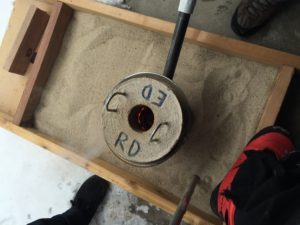
With decent success melting down brass shell casings and casting mini muffin ingots in the past, I decided I wanted to bring the foundry back to life again for this project. This time I would use the lost foam method to cast something more intricate than a muffin shape for my artifact.
The Design Process
I began the iterative design loop with so many different possibilities in mind for this project. Sketching a few shapes I thought would be cool really helped me to think about what shape I wanted to try. I really wanted to cast brass knuckles but after some research discovered they are illegal to own in Colorado so that wasn’t a hood option for a school project. After a little more thought I narrowed it down to a logo made up of a letter or two. Casting a giant brass “R” to resemble my first name would be interesting but I finally concluded to create the CU logo. I knew this was a good choice since I will be able to polish the brass to a shiny gold finish resembling our school colors.
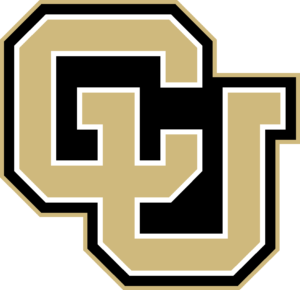
The Casting Process
To create my artifact I recycled about 5 pounds of brass shell casings I collected after a good day of shooting with my roommates. In order to cast the new object I used the lost foam method. This method allows the molten brass to take the shape of any foam object so I ended up cutting out the CU logo using a soldering iron.
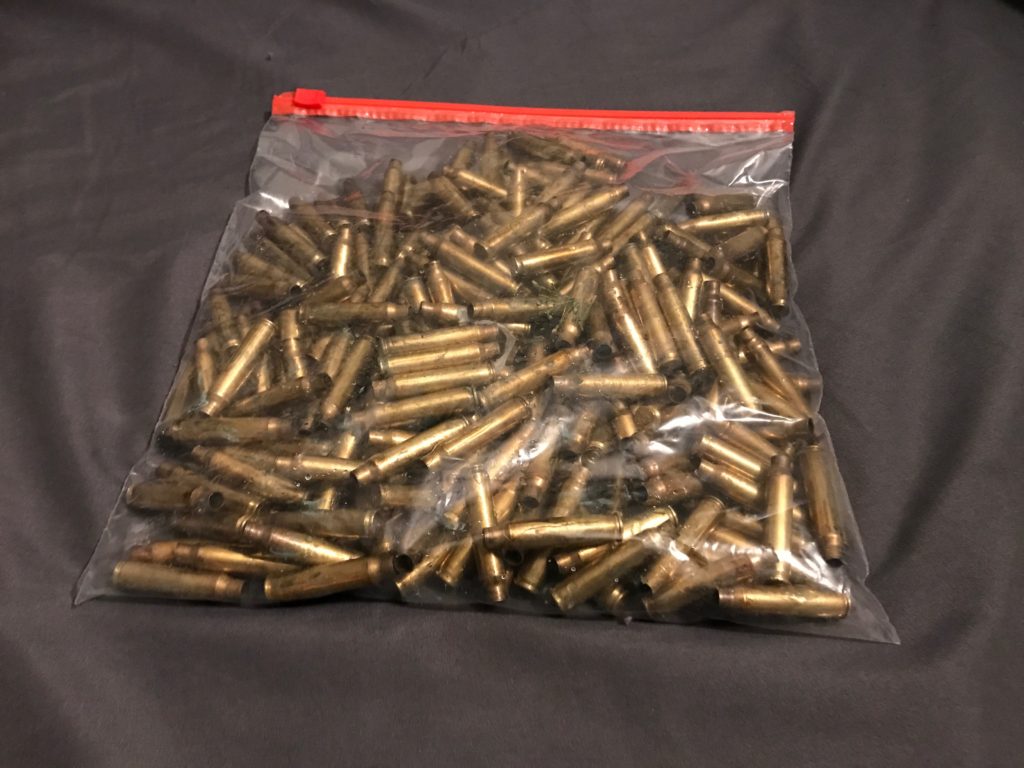
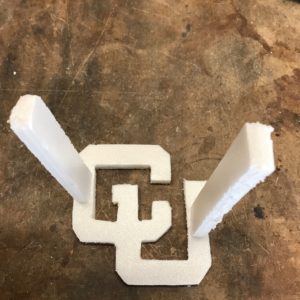
The CU foam piece was then placed in a bucket of greensand with two foam risers sticking through the surface of the sand. Creating green sand was a almost a mini project that had to be completed for the success of this one. Greensand is just a mixture of fine sand and bentonite clay. It turns out that fragrance free kitty litter is mostly bentonite clay so I put some in a blender and pulverized it into a fine powder. Carefully mixing this with the sand and a small amount of water resulted in a nice batch of greensand that really held its shape well. The foundry was then heated up using Grant Thompson’s gas blaster (https://www.youtube.com/watch?v=eO8NwseRxSA) to a toasty 1700 °F. After about 25 minutes all the brass shell casings were liquefied and started to boil.
Once the brass starts to boil, it’s time to pour. This is probably the most stressful part of the project because I had to carefully lift the 1700+ °F graphite crucible out of the foundry and pour it into the foam risers.
After letting the brass cool for about 10 minutes I was able to dig it out of the sand and quench it in water. I was very pleased to see that the cast was successful on my second try and then began to clean it up. Taking the roughly cast emblem to a near mirror finish was a very time consuming task. I started by using an angle grinder to get the rough surfaces ground down.
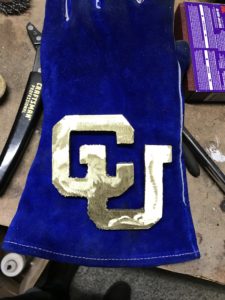
Then I went through several different grits of sandpaper until I ended up with a matte looking finish.
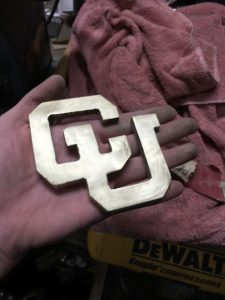
Finally I was able to use a microfiber cloth and some metal polish to really clean up the logo.
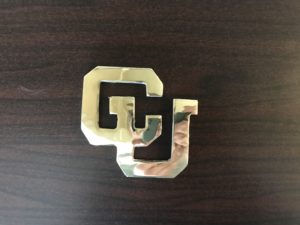
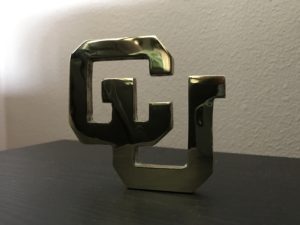
I was curious what kind of brass was created from melting down the shell casings so last summer I took one of the leftover muffins to where I work (NIST). My supervisor had one of his colleagues perform an Energy-dispersive X-ray spectroscopy (EDS) analysis and it concluded that the sample was a pretty high purity yellow brass (70% CU, 30% Zn). If you are curious about the details of the analysis, here is the scan report:
The Goals
Functional
While this artifact is a static emblem, I think it serves as a functional device that will bring back many memories of CU and my four years here. It also helped me to increase my casting skills as I learned so many new things about the whole process.
Artistic
I am very pleased with the way the emblem turned out. I started this project envisioning a luxurious aesthetic to resemble the gold/black colors of CU. After an extensive polishing process I finally achieved a glossy gold finish that I think has a very luxurious look to it.
The Future
I plan to hang this emblem on my wall in my future office as a reminder of CU and where I earned my Bachelors degree. Before then I am thinking about sanding it down again and really working on getting the best finish on the surface that I can.

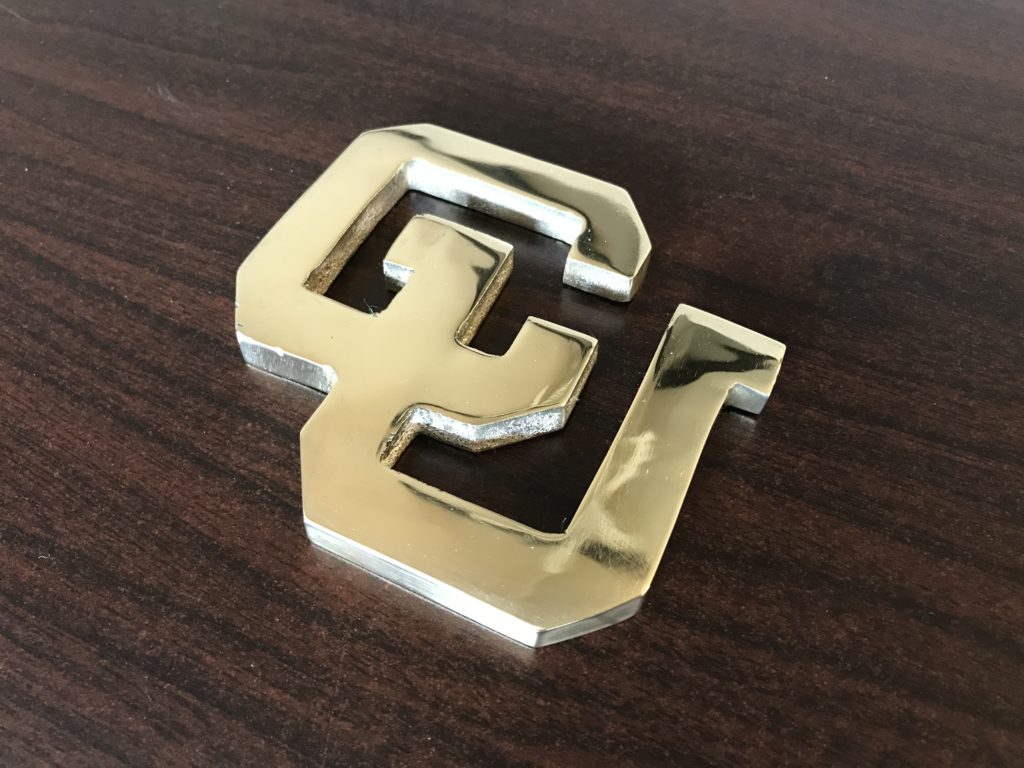
13 Comments. Leave new
Wow, what a cool project! I enjoyed hearing about your thought process in designing this project, and how resourceful you were in creating the medium (the sand) and finding the material (the brass casings) that you needed to create the emblem. The process by which you created the artifact, using your homemade foundry using the lost foam technique, as well as the design process to create the CU emblem was also very fascinating to hear. Did you need to create more than one emblem template, or did you get it the way you wanted it to look the first time? I was somewhat surprised by how long it seemed to have taken to get the final surface finish. It look so shiny and awesome! I am also fascinated by the analysis you were able to do on the brass to determine its purity. All around, I think you did a great job, and this project inspires me to try the process out myself! I am excited to see what you will make next!
Freaking professional, man. Looks great, and I love the extra data you got in the compositional spectrum. I don’t see any problems, rethought decisions, or processes that you had to try again (no design flowchart), did everything really work just great the first time? What else do you have planned for the foundry? Anyway, extremely impressive final product, I hope you pursue other pieces in this same style… scale model guns made from shell casings, MtDew logo from aluminum cans, initials of family/friends with a magnet for their fridge, etc.
This is one of those few projects where the final product looks nothing like the raw materials you start with. Taking the time and effort to make the mould and cast is really appreciable. The CU logo looks really cool. Also the finish is extremely satisfying. Awesome work.
so cool! this is something I have no knowledge on, so seeing your process is interesting.
Choosing the CU logo because of the brassy colors was smart. This seems like a very technical process, it is impressive to see what you could accomplish.
You should make many of these and sell them! I know I’d buy one.
Really impressive! You achieved the luxurious aesthetic that you were going for. I know next to nothing about casting metals so your presentation was really informative. I had no idea shell casings could be melted down to make something usable. Also the spectroscopy information was really cool to see.
I really appreciate the skill required to cast metal. And It’s a great idea to recycle bullet casings, completely embracing the idea of up-cycling. As a mechanical engineer, it was great to see your enthusiasm to work with metal from start to finish. Having contrast of the mirror finish on the outside, to the rough darker surface on the sides was a great idea which was skillfully executed. Great way to show your geek credentials by getting a spectroscopy done!
I really appreciate the skill required to cast metal. And It’s a great idea to recycle bullet casings, completely embracing the idea of up-cycling. As a mechanical engineer, it was great to see your enthusiasm to work with metal from start to finish. Having contrast of the mirror finish on the outside, to the rough darker surface on the sides was a great idea which was skillfully executed. Great way to show your geek credentials by getting an spectroscopy done!
It’s very well done and very impressive. Did you have to worry about the fumes? Looks dangerous! Casting is something that I’ve always wanted to try so you’ve inspired me to try it! Great that you were able to use all recycled materials. I would definitely say you ended up with something that is aesthetic.
This seems like it was a really tiresome process for you! I love that you put so much into perfecting the surface finish of your product — it is shiny, and visually stimulating. The hard edges also contribute to the aesthetic in a really positive way, so your attention to detail is great! Instead of hanging your product on the wall by other means, would you consider incorporating it’s own hanging mechanism? Or maybe a standing mechanism? The coolest part about this project is your use of the foundry for upcycling. Very cool!
This is so cool! I love shooting and I have always been interested in metal casting. It’s nice to see that you used a safer method for melting the metal, I have seen some pretty sketchy setups on the internet. The analysis of the metal was a neat addition to the project.
I’ve always wanted to try casting since my manufacturing class. You obviously spent a lot of time figuring out how to build the kiln, which is incredibly impressive.
Very cool project! I appreciate that you took the time to collect your casings, instead of leaving them in the forest, and casting your project. The CU logo turned out really well, and shiny after sanding and polishing. I really like that you included videos of your manufacturing process: it was cool to see the full process .
This is really neat! I love how you used a foundry to upcycle. Very creative and a great use of waste shell casings.